Reducing welding costs is a formidable way to improve companies revenues. This could allow to give better prices and getting more customers. As well, companies could be able to improve their employees benefits. So, reduce costs could make a difference in companies growth and expansion plans.
In this article we are going to explain 5 ways to reach it. 3 of them are related to planning carefully your work. The fourth is about the job execution. Finally, there is an explanation about a constant activity every company ought to be doing.
So, let’s get started.
1) Choose the appropriate welding equipment
Although there may be great similarities, there are no 2 factories alike. For this reason, the equipment used for the processes of welding can vary according to the needs that each one has, even within the same group of products.
For example, more than 5,000 welding points are required to manufacture a vehicle. In these cases, automation, by means of welding robots is imperative. In very general figures it could be said that 80% of this welding is by means of robots.
However, for the construction of ships, the process is almost the reverse. Manual welding occupies almost 80% of the job.
In both cases, companies must ensure that they have the best equipment for the type of welding they need, be manual or automated by robots.
Many manufacturers of welding equipment and consumables are constantly developing systems and technologies in order to make equipments more effective and efficient, resulting in lower manufacturing costs.
It is a good idea for companies to include in their costs the periodic updating of welding equipment, for these new technologies soon benefit the company.
Miller offers a new technology called Arc Reach, applicable in sectors of construction, assembly of structures, shipyards, among others.
Miller Arc Reach technology
Miller has recently included Arc Reach technology in most of his welding equipment. With this system the operators can remotely adjust the welding parameters without a control cable.
This saves many comings and goings to and from the power source, which can be done several times a day and take many minutes.
It is estimated that the ArcReach technology prevents the loss of about 250 hours/year per welding operator (time saving).
In some countries, such as the United States, labor payment to welding operators can represent 80% of the work costs. In places like these, it is particularly important to apply these new technologies.
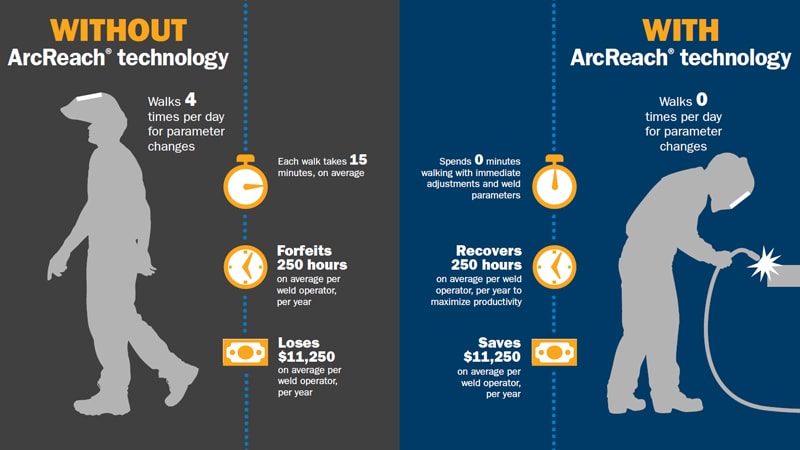
In other countries, labor may not represent so much of the work costs, but still, increase operators production through, for example, Arc Reach technology, can make the works come to an end sooner and more jobs or products could be made in a year period, increasing billing.
Of course, if the welding equipment of the company is more than 5 years old, they are not enjoying these improvements. That is why periodic investment in welding equipment is an excellent way to reduce costs.
These welding equipment become assets for the company, which help them achieve more or better in less time.
2) Choose the right welding consumables
Just as it is necessary to constantly invest in state-of-the-art welding equipment, the consumables that are going to be used must be of good quality.
This is an issue in which many companies choose to save money. “After all, the consumable is something that should be consumed”, some reason.
Although this idea is clear true, the manner and time it takes to consume can reduce welding costs or do not.
It is important that these parts are able to withstand excessive heat or long duration. Generally, the heat of the welding application shortens the life of consumables.
In some countries welding accessories and consumables can represent 80% of the total cost of work or production.
When buying consumables, it is especially important to take care of the quality of:
- Contact Points
- Nozzles
- Gas diffusers
Contact tips: The ones of good quality resist better wear due to electrical erosion, high temperatures, abrasion and slag accumulation.
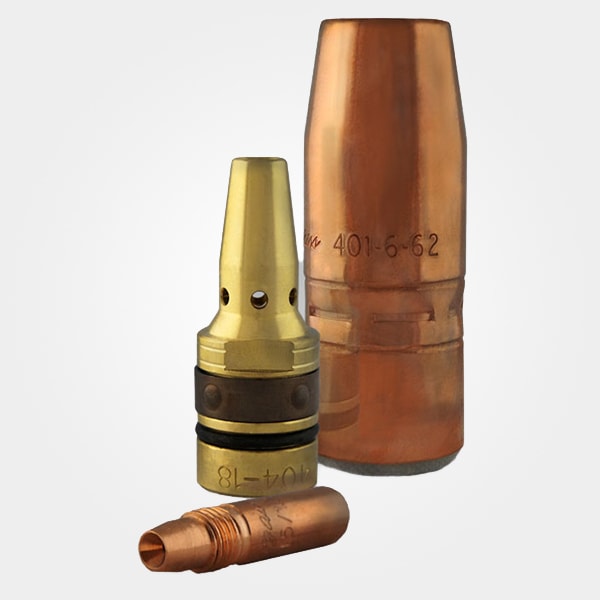
Tregaskiss offers some technologies that help reduce costs in consumables.
Tregaskiss TOUGH LOCK contact tips are precision machined to ensure exact tolerances and a finish of the upper hole resulting in constant welding quality and performance.
With a double conductor thread design, the tips can be rotated 180 degrees to create a new wear position and prolong the life of the tip.
TOUGH LOCK contact tips also work at cooler temperatures than many others, which reduces wear and minimizes downtime for the change.
Nozzles: It is ideal to buy those that have a surface as smooth as possible, to be sure that they have gone through rigorous quality controls.
Gas diffusers: Avoid buying gas diffusers with gaps outside the circumference, as these could alter the way of how the shielding gas comes out, causing a negative impact on the quality of the weld.
All consumables can be affected by splash. Although we will talk about the splash later, it is good to leave clear that the consumables of low quality usually produce more splash than the others.
Quality consumables help reduce welding costs, because they have a longer duration, which minimizes the consecutive purchase of pieces and the time lost in changing them.
At the same time, good quality welding consumables come clean and free of factory grease, which increases their useful life.
On the other hand, even when all are of good quality, it is necessary to choose the appropriate consumable for each operation. If there is a person or purchasing team, they must be able to plan the consumables required to not stop the work or production.
Buying based on quality and not on price can be a considerable way to reduce the medium and long term welding costs.
What is an inverter welding machine?
They are welding equipment that uses an electronic board or chip instead of a transformer to convert the alternating current into direct current.
The operating principle of the inverter for welding is that the frequency of 50-60 Hz of the alternating current that comes from the electrical network increases considerably, between 20,000 Hz and 50,000 Hz.
A higher frequency implies the use of a smaller transformer, which allows the manufacture of smaller and lighter energy sources.
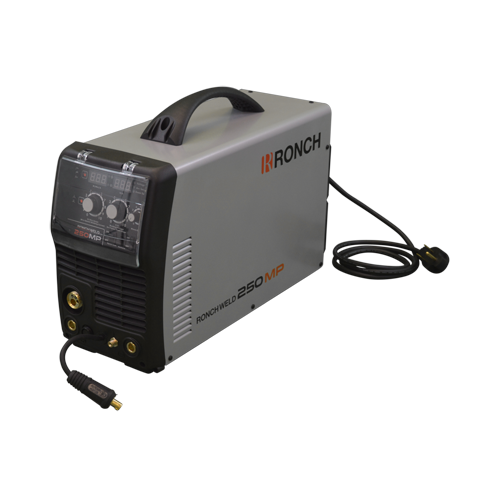
What are the advantages of using an inverter welding machine?
Due to the change in their internal components, inverting welding machines are, on average, 3 times lighter and smaller than traditional machines. This allows the operators to work in heights or places of difficult access.
Since they provide continuous current, inverting welding machines can use any type of electrodes. They can be used for all types of arc welding. In addition, there are single-phase and three-phase models.
Good penetration and stability of the arch is guaranteed with the use of inverting welding machines. This is due to the continuous control of the properties of the arc, even when the voltage is unstable or weak.
They also consume less energy than their peers with transformer-only technology. Lower amount of energy represents savings in operating costs.
3) Teach and train operators
Henry Ford, who started the company that bears his last name and had to deal with welding issues, once said: “There is only one thing more expensive than training a worker and let him go: do not train him and let him stay.”
Certainly, if operators are not experts in what they do, they can make mistakes that, at less, increase the production cost of the companies.
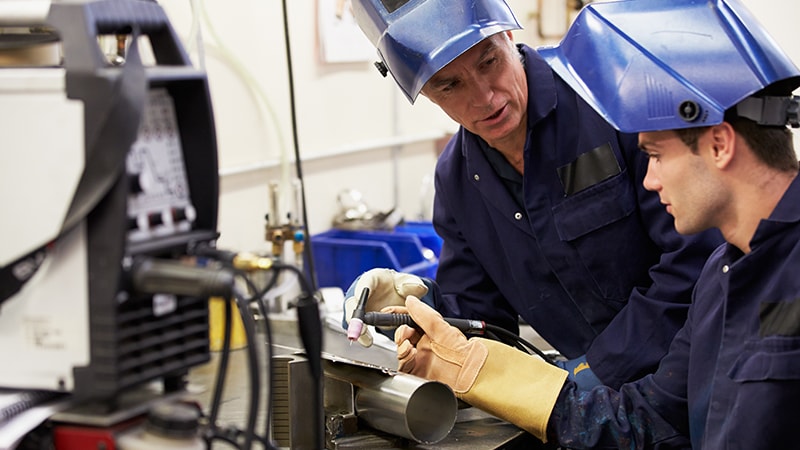
Teaching (giving theoretical instruction) helps an operator adapt more quickly to a new technology. Training (giving practical instruction) develops your ability to do it.
When the personnel is not well trained, they may even have accidents that could end up in the detention of the work or the factory, demands, huge losses, etc.
Training staff can make them more experts in certain welding processes. This could be good for the company, because an expert in a certain welding process could do much faster those jobs that he masters perfectly than any other operator.
If the company has well-trained personnel, each in different welding processes, it could make the production line more efficient.
Of course, something in which all operators -and all the company’s staff- should receive training is about safety standards.
4) Prepare the surfaces and weld with precision
Alexander Graham Bell, an English scientist, used to say: “Before anything else, preparation is the key to success”. This is certainly necessary to reduce welding costs.
One of the best ways to achieve this is to optimize the preparation of the pieces to be welded. In some cases, depending on the thickness of the material, although it may take slightly more time, it is advisable to make a double beveling to the pieces to be welded. That way you could save on welding consumables.
"Before anything else, preparation is the key to success"
Alexander Graham Bell Tweet
Cleaning the parts thoroughly, eliminating oxidation, paint residues, grease, oil, and moisture, can help the resulting weld to be free of pores and welded at an ideal speed for the process.
Part of the preparation may include taking care of consumables such as wires and electrodes. If some of these are left at the end of the workday, they should be carefully stored to prevent them from getting wet or filled with grease or other contaminants.
There is a lot to be said when it comes to improving welding operations. Here we only list some points:
Consider including welding automation processes
A welding robot can spend 85% of the time welding while an operator usually spends only 20%. Only this figure manages to reduce welding costs considerably in a short time.
It is clear that, however advanced they are, welding robots need humans to program and assist them. There are consumables to replace and situations to attend to.
In addition to the time and money saved with automated welding, it is also possible to improve the quality of processes and minimize the time that work is stopped.
Welding robots usually complete the processes so that reworking is not necessary. This is another saving in time and money.
When welding robots are used, it is necessary to carefully monitor these issues:
- Add accessories and peripherals that improve work
- Manage consumables properly and take care of them
- Do preventive maintenance (PM)
- Use optimal welding consumables and calculate their duration
However, installing welding robots in a company can mean a large investment. In the long run, however, savings can be seen in times of production and quality of the pieces produced.
To automate some of the welding work, companies require experts to advise them on which equipment to buy and how to use them. Our experts can help you install the welding robots that your particular production needs, with the best cost-benefit ratio.
Of course, not all operations can have automated welding. Some companies carry out field work where manual welding is essential.
The splash
In particular with manual welding it is necessary to avoid splashing. Although some spatters may not affect the strength of the weld, they increase cleaning costs.
It is possible that the splash is caused by:
- Having a very high current
- Having a not appropriate current for the size or type of electrode in use
- The correct polarity is not being used
- The arch is very wide
- The correct angle is not being used
- The electrode is wet
To reduce splash, try to correct any of these possible errors.
Speed up taking care of quality
Examine the welding processes that are carried out in order to see if they can be improved. Issues such as the diameter of the wire or electrode, the speed of the feeder, the type of gas can affect the final cost of work.
Another way to accelerate the speed of work can be by arranging the workstations so that they are more efficient. The idea would be to avoid unnecessary movements of the operators.
Also the operators could have around them some items necessary for welding, such as gas, electrodes, wires, etc. so as to avoid wasting time in obtaining them.
You can have them regularly provide supplies or be given in the morning what they need for the entire day.
Many companies monitor welding jobs through specialized software. This allows them to see how efficiently they are working and saving on energy. In turn, this allows them to know the condition of the equipment of welding.
Any repetitive activity that takes place in the production line should be reviewed to confirm that it is done in the most efficient way possible.
Likewise, it is necessary to take care that the consumables are stored in the correct way, preventing them from getting wet. It should also be checked that there are no gas leaks and take care that other safety standards are met.
How to clean the pieces to be welded?
The best welds come from the pure contact of clean metal with metal. Any foreign material in the welding area can cause imperfections in the weld. Depending on the material, the size and shape of the piece, you can consider some mechanical techniques such as:
The use of the polisher or emery: An angular polisher with an abrasive or wire disc (pleasant) is ideal for preparing steel for MIG or TIG welding. It is not recommended in very thin sheets since it can compromise the resistance of metals.
Orbital polisher: This type of polishers can be useful to clean smooth or flat pieces.
The use of sandpaper or wire brush: It is a manual operation that works very well in cleaning steel parts for MIG and TIG welding or stainless steel, but it can take much longer and does not always eliminate all the oxides or impurities in the metal.
Abrasive blasting: If the metal to be welded is very oxidized and is not suitable for sanding or removing with a polishing machine, another option for preparing the metal is to do it with abrasive blasting.
Traditionally sand has been used, but today there are other materials available.
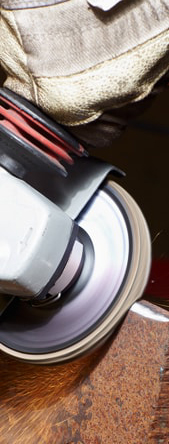
Avoid the overwelding
When planning work, determine how much welding certain parts may need. Some companies develop plans to indicate to the operators how much welding they require certain jobs or products and thus avoid that they reinforce more.
Make sure the welds are the right size. If required, for example a 3/16 “fillet and you deposit a 1/4” fillet, it will be oversized by 78% in the amount of welding applied.
By avoiding excessive welding, it reduces waste, reduces application time and reduces the cost of manufacturing.
Also, by better planning the pieces, you can reduce the empty spaces, which end up being covered with solder.
Another way to avoid excess welding is by using the correct process for the application that is occurring. How to choose the appropriate process between TIG, MIG, etc? One of our experts can help you in that. Contact us to advise you in this matter.
The position when welding
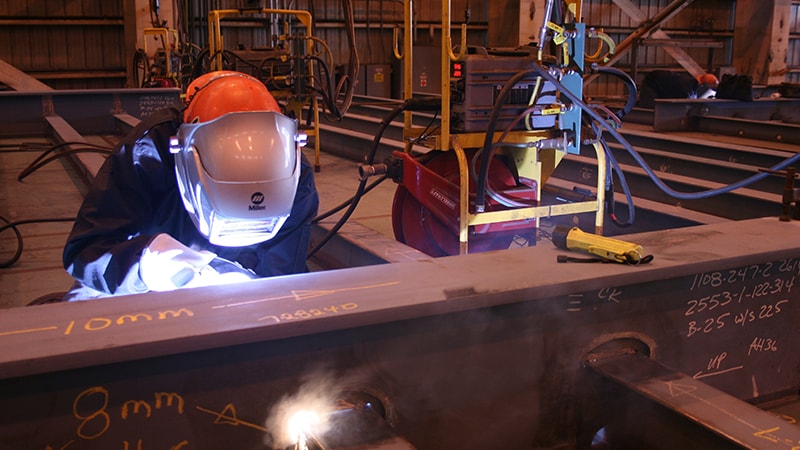
It is also necessary to pay attention to the position used for welding. The most recommended is to weld pieces in horizontal position. When that is not the possible position, some operators do not feel so comfortable and the weld bead is deficient.
Welding out of position (for example vertical, or over head) reduces the speed of deposition because gravity acts against us and forces us to work with lower amperages.
The horizontal position allows the operator to use thicker electrodes and execute their work easier and faster.
Keeping the arc in the proper length decreases splashes and concentrates the current in the joint to be welded.
At the moment of welding, the operator does well to check that all the cables are well connected and in good condition. By the way, the appropriate cables should not be too short, so they do not get too hot, nor too long, so they do not waste energy.
What other activities affect the cost of welding?
There are many activities that are necessary and some are more difficult to take into account, but they affect the cost of welding. We can see some before welding and when welding.
Before welding
Preparation of the solder joint: This may include placing a bevel on a plate or simply cleaning the joint to free it from scale, rust, oil or other contaminants.
Assembly: This is to assemble all the parts in an accessory or simply take them to a welding station where the welder can easily take all the necessary components.
Positioning of the piece: In some cases, we can not locate the piece, but when we can, we will move it to weld it more easily.
When welding
Change the filler metal and / or the shielding gas: The wire spools, the bar electrodes and the protection gas bottles when they are finished. We need to account for this time of change.
Breaks and meetings: most companies allow breaks. This can be as little as a 10-minute break in the morning and another 10-minute break in the afternoon. This may also include time for production and safety meetings.
Cleaning: The cleaning that must be done at the end of the day, between shifts, or even between the assembly of each product.
Move the assembly once completed: Once the assembly is completely welded, it must move to another place.
Time for post-welding heat treatment: If necessary, the time for heat treatment after welding should be taken into account.
As can be seen, there are many necessary activities without welding. Some of these can not be eliminated.
Tacking can be eliminated with elaborate accessories. The change of the protection gas bottle can be eliminated by the use of a bulk gas supply system. However, in general all these activities will always be present.
5) Make a Preventive Maintenance (PM) plan
On the other hand, even the best welding equipment will fail if maintenance is not done. That is why preventive maintenance (PM) should be a recurring task in welding workshops.
Without preventive maintenance, equipment will fail at any time, which may mean stopping the entire operation, in some cases.
Many times, after a failure, you have to invest time and staff to find out what the failure might be, and then buy the necessary spare parts to solve it.
Although it can not be avoided that from time to time there are unforeseen events, these can be reduced with a good program of preventive maintenance, which would reduce costs in welding.
Apply management methodologies
Some companies apply the 5S methodology, created by Toyota to increase the productivity of its workers.
With this method work environments are better configured for employees to perform their tasks faster and with fewer risks.
Some of the practices of this methodology is to have closer the equipment and materials that are used more frequently.
The 5S methodology also advocates cleaner and better-groomed workplaces, which helps improve worker motivation and prevents accidents.
Other companies use the Kaizen management method to continuously improve their processes and how they are executed.
Whatever method the company decides to apply, analyzing how it is being worked and the results obtained can help to make decisions that help reduce welding costs.
In a few words
Reducing costs in welding is a must for any company that performs production processes in metal or whose main objective is the treatment of metals.
You are most welcome to ask whatever you need to know to reduce costs in welding. Our experts not only can help you to define the equipment you would need, but also techniques for the operation execution.
We regularly publish useful information for the industrial finishing industry. Subscribe here to our monthly newsletter to stay informed.
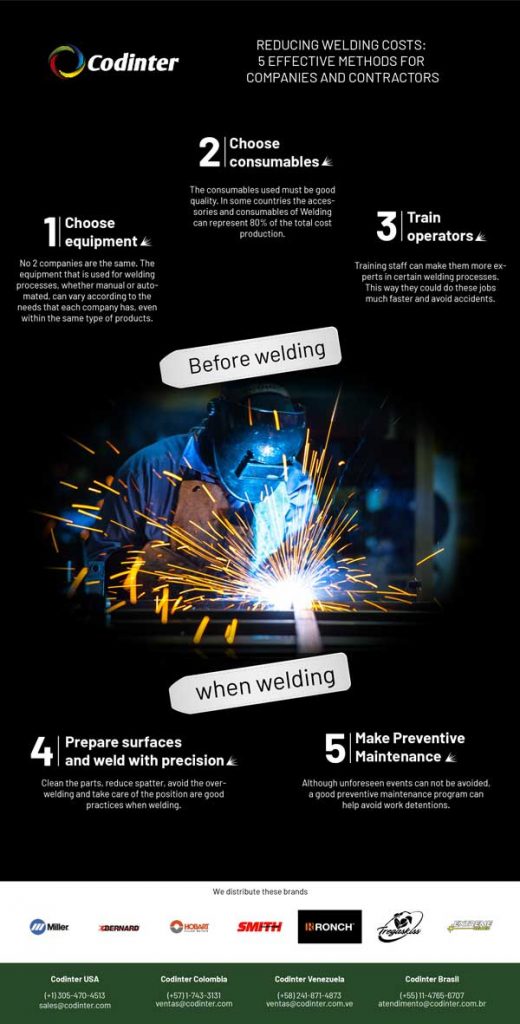
As a summary, we have done this infographic where you can easily see what is explained in this article.
Did you like this article? We invite you to comment. Do you have questions? Contact us or make them in the comments section and very soon we will be answering.

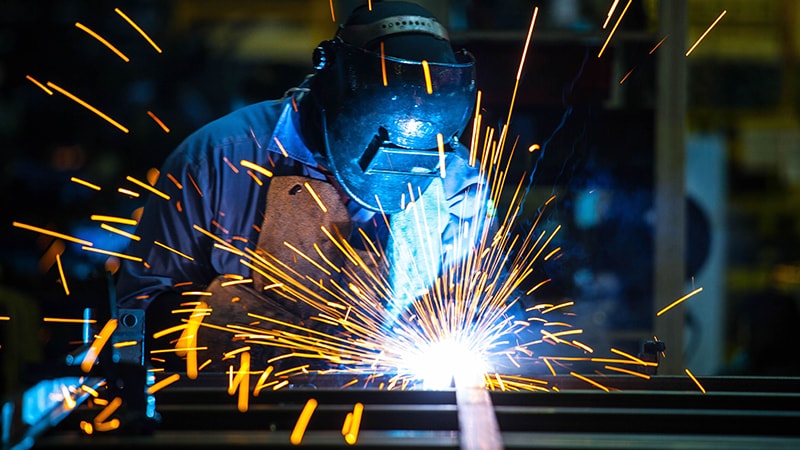




This Post Has 3 Comments
To be honest your article is informative. I search many site to know about welding business but I didn’t get the information I needed. I saw your site and I read it. I got some new information from here. I think some of your tips can be applied to those too! Thank you so very much for such informative and useful content.
It’s great to know that companies must ensure that they have the best equipment for the type of welding they need, be it manual or automated by robots. My brother will become a welding contractor providing welding services for manufacturing companies. I’ll share this with him since it could let him know how to run the business efficiently. Thanks!
Hi Levi! Thank you for your comment. I hope this information maybe useful for you brother.